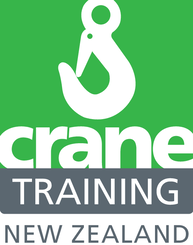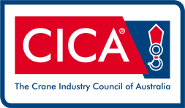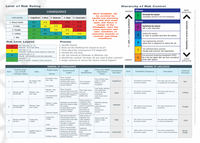 New look lift plans are now available on Crane Training Shop. These lift plans now include a risk analysis page by which you can assess hazards on the job. This brings the lift plans into line with the Health and Safety at Work Act 2015. The lift plans available are:
Also available the latest risk posters Tragically, every year in New Zealand, 10 per cent of workers are harmed, 75 people die at work and around 600-900 employees pass away due to work-related diseases.
The high injury and fatality rates, significant work related disasters and changes to working arrangements led to a Taskforce being established in 2012 by the NZ Minister of Labour to review NZ's work safety laws. Following the Taskforce Report and Parliamentary Review, the revised Health and Safety reform Bill was passed by Parliament in August 2015. The new legislation will come into play on the 4th April 2016. New Zealand's new laws will more closely reflect contemporary working arrangements and represent a common set of standards and expectations nationally with the objective of reducing fatalities and injuries. To assist businesses in New Zealand prepare for the changes, Manage Company in partnership with WorkPro have developed an ebook 'New Zealand's Work Health and Safety Future' containing valuable information, resources and tools. Download your Ebook here The Health and Safety Reform Bill has passed and the new law (the Health and Safety at Work Act) will come into force 4 April 2016.
The Bill is part of “Working Safer: a blueprint for health and safety at work” and reforms New Zealand’s health and safety system following the recommendations of the Independent Taskforce on Workplace Health and Safety. Read more here We have seen a lot lately about the high risk industries in this country like worm farming and the growing of lavender but the nuts and bolts of the legislation needs to be understood and so here is an outline of what it is:
The Bill is divided into five Parts: - Part 1 Health and Safety at Work - Part 2 Health and Safety Duties - Part 3 Worker engagement, participation and representation - Part 4 Enforcement and other matters - Part 5 Miscellaneous provisions - Schedule 1 Transition and savings provisions - Schedule 1A Health and safety representatives and health and safety committees - Schedule 2 Health and Safety in mining sector - Schedule 2A Provisons relating to classified security information - Schedule 3 Consequential amendments As the industry delves into the legislation and interprets the impact on the industry then more information will come to light. In the meantime it is recommended to look at the transitional provisions in Schedule 1. The PECPR is to be treated as a Regulation under this legislation and may be amended or revoked accordingly, so watch this space. Approved Codes of Practice remain in fore until they are amended or revoked. Exemptions granted under the Health and safety Act 1992 remain in force including any limitations or conditions imposed on that exemption. If you believe that we, as an Association, should be addressing any issues that you feel are detrimental to our industry then by all means contact the executive office. The latest Canterbury Rebuild Safety Charter newsletter has the following articles
Safety Spotlight Graham’s View Charter News The Workers' Voice Data Update Welcome Aboard Coming Up Contact Us You can view the newsletter here The government's select committee has delayed the release of their recommendations on the HSW Act and this means that the enactment of the HSW Act will be pushed back:
• report back from Select Committee now expected by end of May (originally 31 March) • 2 or 3 months for the passage of the Bill through the remainder of the parliamentary process • final effective time frame anticipated to be early 2016 subject to above http://www.parliament.nz/en-nz/pb/sc/details/transport-industrial-relations/00DBHOH_BBSC_SCTIR_1/business-before-the-transport-and-industrial-relations Regulations Exposure Draft Release MBIE has released the first exposure drafts of the proposed first wave of regulations for public consultation. The links to the drafts and cabinet papers can be found below: http://www.mbie.govt.nz/what-we-do/workplace-health-and-safety-reform/development-of-regulations-to-support-the-new-health-and-safety-at-work-act http://www.mbie.govt.nz/what-we-do/workplace-health-and-safety-reform/development-of-regulations-to-support-the-new-health-and-safety-at-work-act/exposure-drafts-of-phase-one-regulations The Crane Association of New Zealand places a great deal of importance on training and safety. Over the past 12 months we have watched the strong uptake of the Best practice guidelines for working at height in New Zealand released in April 2012. The Crane Association was involved with this document at a consultation level. Over the past 12 months we have had a number of members provide feedback regarding working at height. Specifically the unloading of trucks. These members have been looking for viable options to keep staff safe. The issue has been that it is normally easy to load in a known environment with methods and procedures in place but on arrival at a construction site the picture is often very different due to space constraints.
One solution members may not be aware of being used within industry has been Inertia Reels. The Crane Association supports this approach and today release a guideline to our members choosing this option. You can download from the members area our Guideline for the safe use of Crane Anchored Inertia Reels. (Crane Association Members Only) |
Archives
June 2023
Categories
All
|
|
|
|
NZBN: 9429042812272
The Crane Association of New Zealand (Inc.) has membership or reciprocal membership with the following associations

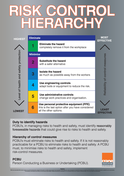

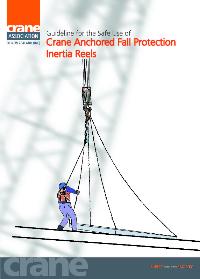
 RSS Feed
RSS Feed

